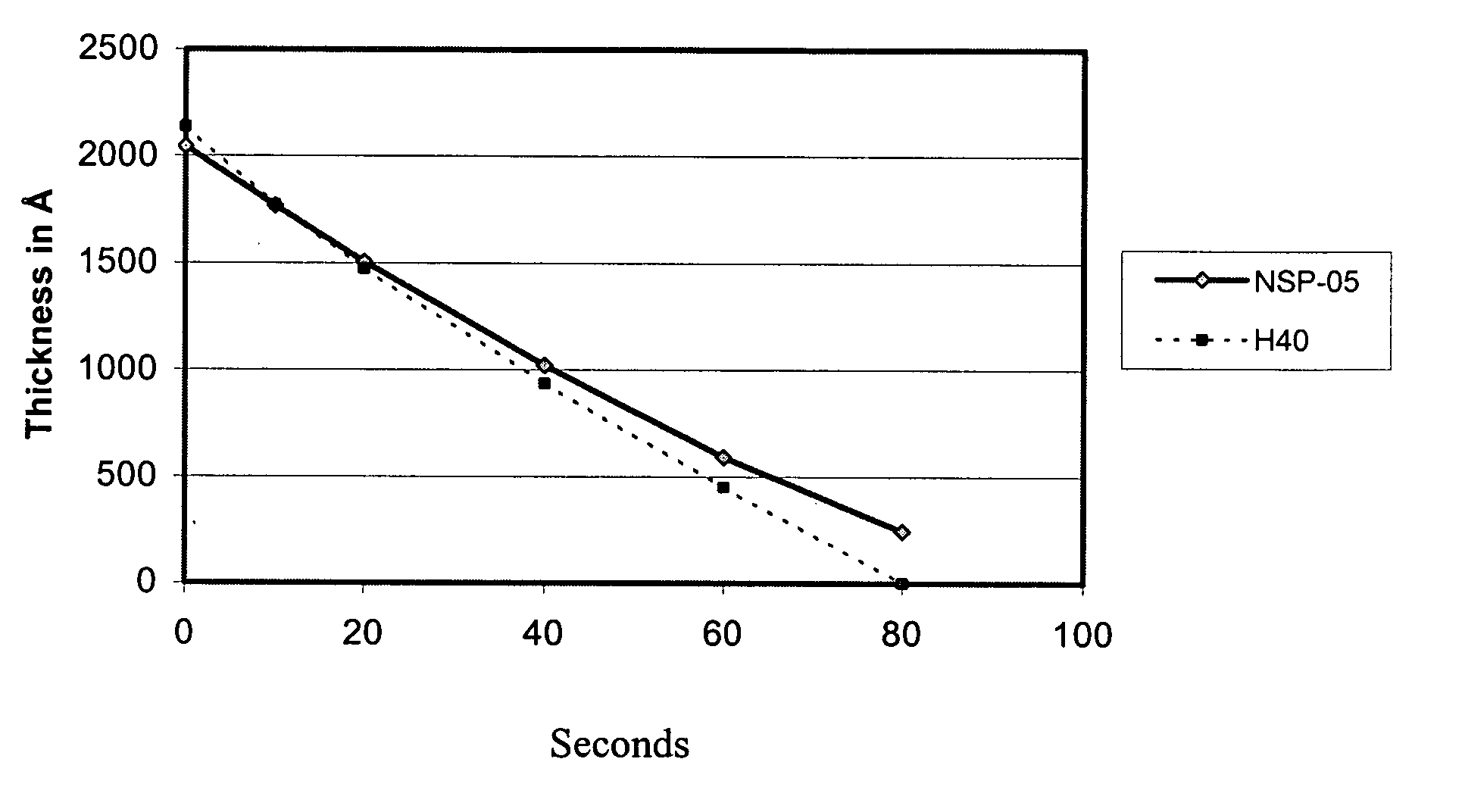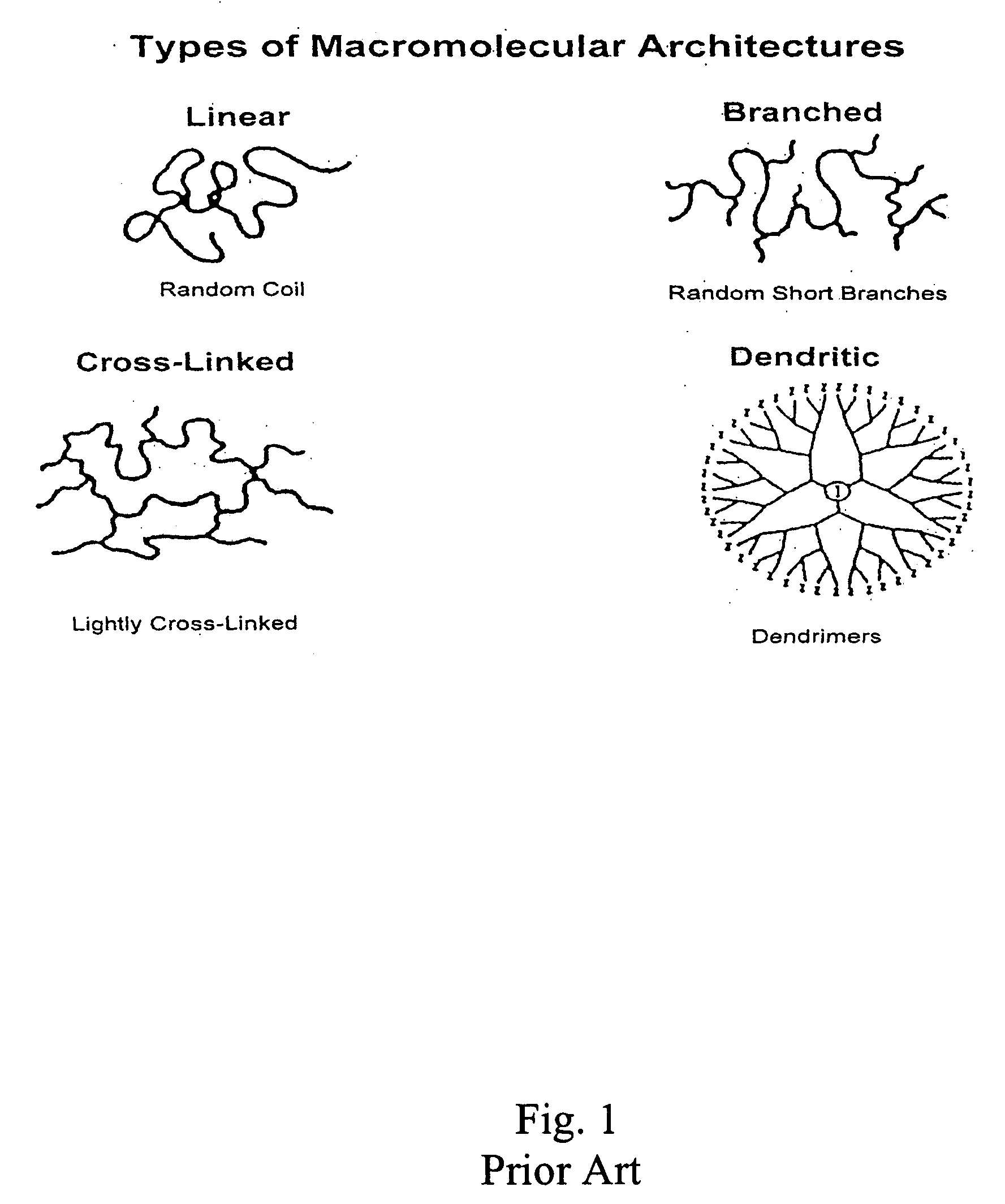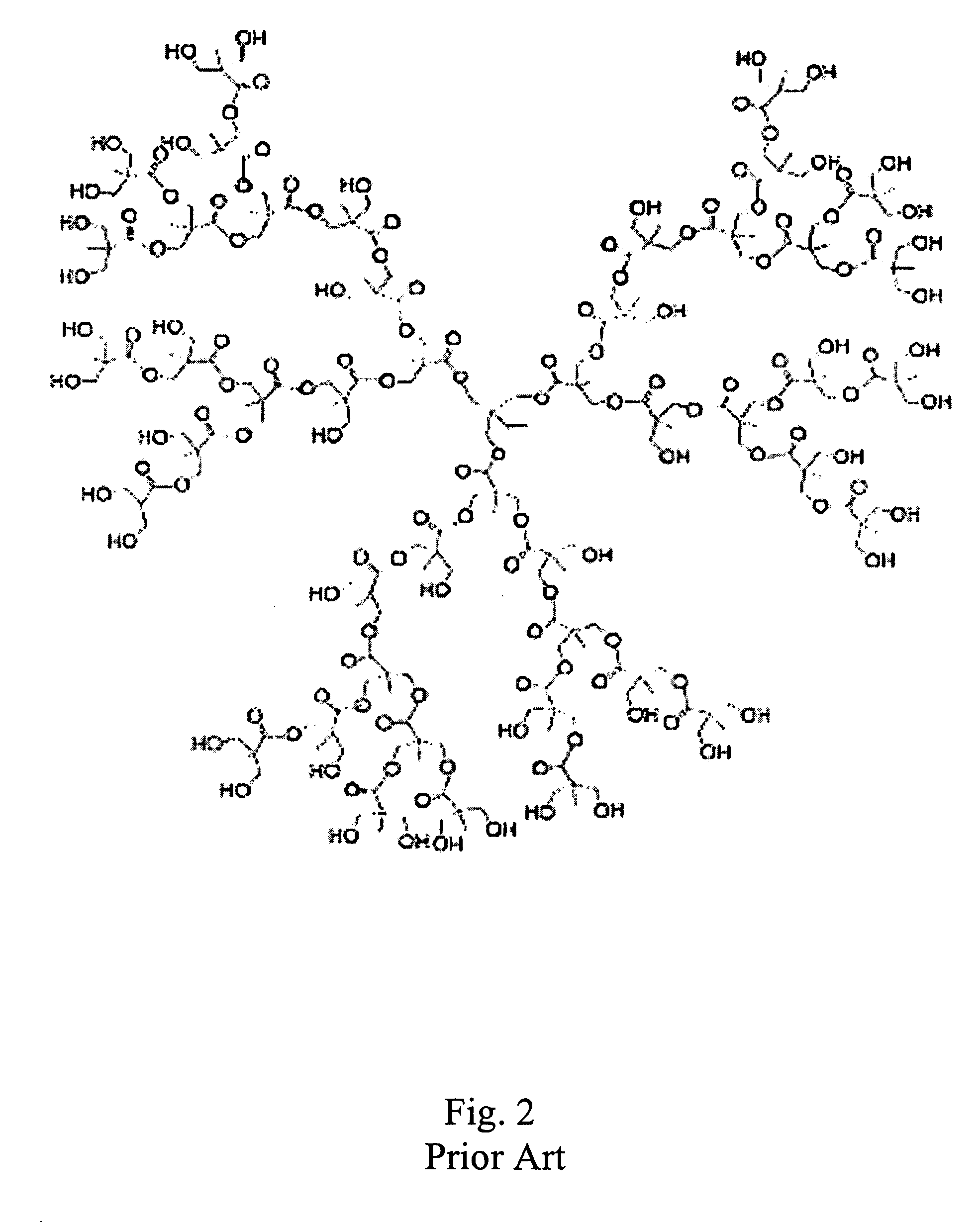Gap fill materials and bottom anti-reflective coatings comprising hyperbranched polymers
a polymer and filling technology, applied in the direction of photosensitive materials, instruments, photomechanical equipment, etc., can solve the problems of reducing the resolution of the photoresist, affecting the image quality of the processed photoresist, and reducing the adhesion of the active radiation back into the photoresist by the substrate, etc., to achieve superior coverage and low viscosity
- Summary
- Abstract
- Description
- Claims
- Application Information
AI Technical Summary
Benefits of technology
Problems solved by technology
Method used
Image
Examples
example 1
Formulation of Gap Fill Material for Exposure Wavelengths of Less Than 400 nm
[0036] In this example, a gap fill material was prepared by mixing 5.65% by weight of BOLTORN H40 (a hyperbranched polymer having a molecular weight of 5100 g / mole and available from Perstorp Specialty Chemicals AB, Sweden), 0.05% by weight of CYMEL 303LF (a crosslinking agent available from Cytec Industries), 1.31% by weight of POWDERLINK 1174 (a crosslinking agent available from Cytec Industries), 0.018% by weight of p-toluenesulfonic acid (pTSA), 0.32% by weight of Bisphenol-A, 91.652% by weight of propylene glycol monomethyl ether (PGME), and 1.0% by weight of propylene glycol monomethyl ether acetate (PGMEA). The solution was coated onto a silicon wafer at 1500 rpm for 60 seconds and then baked at 205° C. for 60 seconds. The film thickness was 190 nm measured on an ellipsometer. The refractive index, n, was 1.60 at a wavelength of 248 m and 1.71 at a wavelength of 193 nm. The extinction coefficient, k...
example 2
Formulation of Gap Fill Material for Exposure Wavelengths of Less Than 400 nm
[0037] In this example, a gap fill material was prepared by mixing 5.65% by weight of BOLTORN H20 (a hyperbranched polymer having a molecular weight of 5100 g / mole and available from Perstorp Specialty Chemicals AB, Sweden), 0.05% by weight of CYMEL 303LF, 1.31% by weight of POWDERLINK 1174, 0.018% by weight of pTSA, 0.32% by weight of Bisphenol-A, 91.652% by weight of PGME, and 1.0% by weight of PGMEA. The solution was coated onto a silicon wafer at 1500 rpm for 60 seconds and then baked at 205° C. for 60 seconds. The film thickness was 183 nm measured on an ellipsometer. The refractive index, n, was 1.60 at a wavelength of 248 nm and 1.70 at a wavelength of 193 nm. The extinction coefficient, k, was 0.00 at a wavelength of 248 nm and 0.05 at a wavelength of 193 mm.
example 3
Formulation of Gap Fill Material for Exposure Wavelengths of Less Than 400 nm
[0038] In this example, a gap fill material was prepared by mixing 5.65% by weight of BOLTORN H30 (a hyperbranched polymer having a molecular weight of 5100 g / mole and available from Perstorp Specialty Chemicals AB, Sweden), 0.05% by weight of CYMEL 303LF, 1.31% by weight of POWDERLINK 1174, 0.018% by weight of pTSA, 0.32% by weight of Bisphenol-A, 91.652% by weight of PGME, and 1.0% by weight of PGMEA. The solution was coated onto a silicon wafer at 1500 rpm for 60 seconds and then baked at 205° C. for 60 seconds. The film thickness was 186 nm measured on an ellipsometer. The refractive index, n, was 1.60 at a wavelength of 248 nm and 1.70 at a wavelength of 193 nm. The extinction coefficient, k, was 0.01 at a wavelength of 248 nm and 0.05 at a wavelength of 193 mm.
PUM
| Property | Measurement | Unit |
|---|---|---|
| Temperature | aaaaa | aaaaa |
| Fraction | aaaaa | aaaaa |
| Percent by mass | aaaaa | aaaaa |
Abstract
Description
Claims
Application Information
 Login to View More
Login to View More - R&D
- Intellectual Property
- Life Sciences
- Materials
- Tech Scout
- Unparalleled Data Quality
- Higher Quality Content
- 60% Fewer Hallucinations
Browse by: Latest US Patents, China's latest patents, Technical Efficacy Thesaurus, Application Domain, Technology Topic, Popular Technical Reports.
© 2025 PatSnap. All rights reserved.Legal|Privacy policy|Modern Slavery Act Transparency Statement|Sitemap|About US| Contact US: help@patsnap.com



